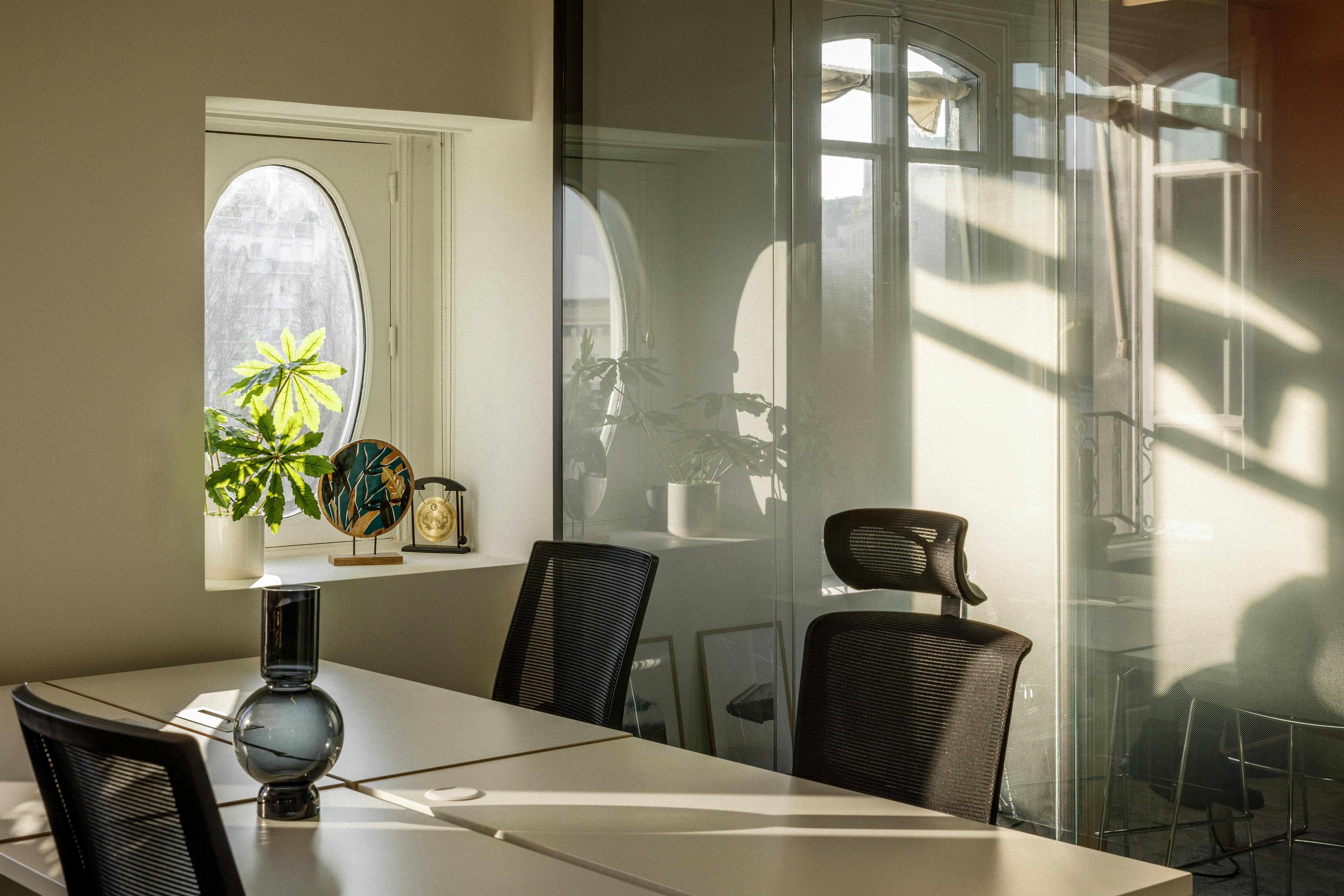

How to organize your work desk?
Have you ever felt that frustration when desperately searching for an important document on your cluttered desk? Or perhaps wasted precious time rummaging through drawers looking for a simple stapler? If so, you likely understand the importance of a well-structured workspace. An organized desk is not just a matter of aesthetics; it's a crucial element for optimizing your efficiency and productivity on a daily basis.
In this article, discover our practical tips for improving the organization of your workspace.
Sorting and decluttering
Identifying and eliminating unnecessary items
To effectively organize your workspace, the first step is to sort and declutter your space. This involves identifying superfluous items cluttering your desk and efficiently eliminating them. To do this, take the time to examine each item on your desk and ask yourself if it's truly necessary for your daily work.
A simple trick to spot unnecessary items is to ask yourself the following question: "When was the last time I used this item?" If the answer is "several months ago" or "I don't even remember," it's likely that this item is superfluous and can be eliminated. Old documents, obsolete supplies, or unused gadgets can often be set aside. We tend to think we'll need them someday, but that's often not the case, and keeping these items only adds mental stress.
Once you've sorted these unnecessary items, use a dedicated waste paper basket. Keep it within reach on your desk so you can toss items you no longer use into it. This will help free up space and create a clearer, more conducive work environment.
Sorting methods: Keep, Discard, Maybe
Once you've identified superfluous items on your desk, it's time to sort them using the "Keep, Discard, Maybe" method. This approach involves making quick and rational decisions about each item based on its relevance to your work.
- For items you use regularly and are necessary for your daily work, keep them within reach on your desk.
- For items that are no longer useful or are obsolete, discard them without hesitation into your waste paper basket.
- For those you're unsure about or only use infrequently, set them aside in an area designated for later reassessment.
This sorting method ensures that each item has its place on your desk and that you only keep what's truly necessary for your work. This promotes efficiency in your daily tasks and creates a work environment conducive to concentration.
Organizing paper documents
Sorting papers and documents
As mentioned above, it's essential to regularly sort through your papers and documents to maintain an organized workspace. Here's a step-by-step method to help you effectively sort through them:
- Document Collection: Start by gathering all papers and documents scattered on your desk and in your drawers. This includes invoices, notes, reports, mail, etc.
- Categorization: Once you've gathered all your documents, begin by grouping them into similar categories. For example, create separate piles for invoices, administrative documents, meeting notes, etc.
- Review and Decision: Next, take each stack of documents and review them individually. Ask yourself if you really need to keep each document. If it's an important document or essential to your work, keep it. Otherwise, consider discarding or recycling it.
- Filing: Once you've sorted your documents, file them neatly in folders or binders. Use clear labels to identify the contents of each folder and facilitate future retrieval.
- Disposal: Finally, make sure to dispose of documents you no longer need to keep. This may involve shredding sensitive documents or tossing them in the trash.
Digital storage solution
At present, it's just as important to adopt a digital storage solution to manage your digital files as it is to deal with paper documents. Here's why:
- Space-saving: Digital storage frees up physical space on your desk by reducing the need to keep paper copies of your documents.
- Accessibility: Digital documents can be easily accessed from any internet-connected device, allowing you to work more flexibly.
- Organization: By sorting and renaming your digital files properly, you can create a well-organized digital workspace that's easy to navigate.
Some popular tools or platforms for digital storage include Google Drive, Dropbox, and Microsoft OneDrive. These services offer secure storage and file-sharing features to help you effectively manage your digital documents.
Desk accessories storage
Stationery tools and organization
Who hasn't sighed at the sight of their desk cluttered with pens, highlighters, and papers strewn everywhere? To remedy this, we recommend starting by using pen holders and pencil cups to store your supplies. Not only does this keep your tools within reach, but it also prevents them from cluttering your workspace. With this simple yet effective method, you'll be able to easily find what you need, when you need it.
Drawer compartments and boxes
When you open your drawers, clutter overwhelms you, and you feel overwhelmed? Between paper clips mingling with tape, pens, and papers, you don't know where to start. We advise you to opt for compartments and storage boxes to separate and organize your small items and supplies neatly. Compartments segment drawer space, making it easier to search for and retrieve necessary items. For example, you can use drawer boxes to store paper clips, thumbtacks, staplers, and other small desk accessories. This saves you time and avoids rummaging through the drawer for a specific item.
Utility of wall storage
Wall storage, such as shelves, hooks, or pegboards, offers a convenient solution to optimize your desk space while keeping your essentials within view. If possible, opt for vertical organization to free up space for efficient work. This maximizes the use of your space and helps maintain an orderly and functional work environment.
Wall storage also contributes to the decoration of your desk and adds an aesthetic touch. Choose shelves that integrate seamlessly with the style of your workspace, and use them to showcase decorative items or green plants, for example.
Selection of functional furniture and accessories
Importance of office furniture with storage
Choosing office furniture with built-in storage has many advantages. These pieces not only offer additional storage space for your supplies, documents, and files but also help optimize the organization of your workspace. Built-in shelves, drawers, and cabinets help keep your desk clean and tidy by providing practical and accessible storage solutions.
Essentials for a well-organized desk
Beyond office furniture, there are small items that make all the difference in keeping a desk organized. Modular storage solutions are useful for adapting your workspace to your needs. You can adjust them to your liking to maximize the use of available space and make your desk reflect your personality.
Another indispensable accessory: the computer stand. It allows you to position your screen at the ideal height for your comfort and posture. In addition to freeing up space on your desk, it helps you better organize.
Finally, let's not forget paper management accessories, such as the desk bin and paper shredder. These are essential tools for getting rid of unnecessary items and lightening the load on the desk.
Conclusion: Tips for maintaining good organization
It's not about having a tidy desk one day only for it to become a battlefield the next. To maintain an organized desk in the long term, adopt organizational habits in your daily life. Dedicate a few minutes each day, whether in the morning when you arrive or in the evening when you leave, to tidy up your desk and put each item back in its place. Store documents as soon as you finish using them and make sure to regularly clean your workspace to prevent clutter accumulation.
Also, schedule more thorough cleaning sessions once a week or month, as needed. Take advantage of these times to sort through documents, clean surfaces, and get rid of anything no longer necessary.

Contact Us
We find your Perfect fit!

